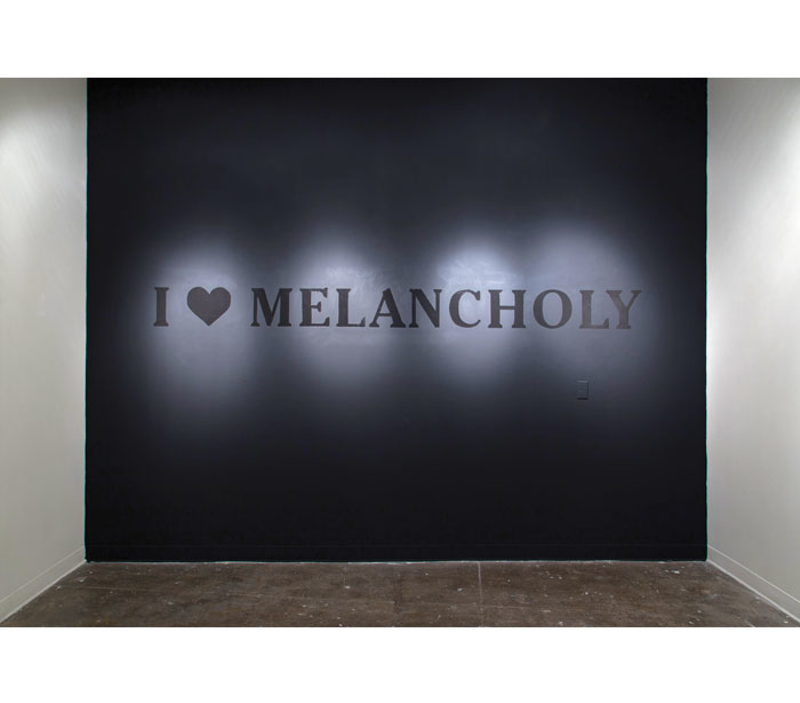Depending on its host site, exhibiting artwork owned by one collector can be fraught with both financial and ethical implications. A win-win for the owner as well as the institution itself, exhibiting the work at a site with cultural cachet — such as a museum or another collecting institution — can preternaturally boost the work’s market value, while private collector-centered exhibitions are often coupled with expectations of future donations or bequests.
However, when the work is conceptually radical and shown in a center for education — such as the current show, Selections from the Karen & Andy Stillpass Collection, on view at the Art Academy of Cincinnati’s Pearlman Gallery — it is a fitting location for just such a kind of experimental, avant-garde work. (Full disclosure: the author of this article is currently an adjunct professor at the Art Academy.)
Son and nephew of the founders of the former Stillpass car dealerships, Andy Stillpass — with his wife, Karen — has been collecting cutting-edge Contemporary art since 1984. More than a decade ago, Christopher Bollen of The New York Times Magazine called him “one of America’s most radical and eclectic Contemporary-art collectors.” He has commissioned work from superstars in the art world. From his home in Indian Hill, Stillpass said in a phone interview that he has always been interested in art and once wanted to teach.
And the kind of art that appeals to Stillpass (and what much of the art currently on view at the Art Academy demonstrates) fits his penchant for writer John Dewey’s “Art as Experience” approach. The object itself isn’t the point of the work, but rather the process and development of an experience.
Stillpass often collaborates with artists, commissioning and helping inform the work based around his family’s home life and relationships. While much of the work he’s collected over the past three decades is site-specific, Stillpass says he also has many pieces “bought off the shelf.”
But for this show he decided on a more experimental kind of work — not just because it was easier than packing up large crates, but also because, as Stillpass says, “It’s a school, so it’s going to be nice for incoming students who maybe don’t have a whole lot of experience with that kind of work to maybe make them aware.”
Then he adds thoughtfully, “To challenge them to think about what is art?”
And the work does just that. There are officially six items on display in the three rooms that make up the Pearlman Gallery, and the space looks nearly empty.
Keith Benjamin, longtime sculpture professor at the Art Academy, installed the Minimalist and conceptually driven work and then thoughtfully added a few of his own touches to the space — a kind of riff on the vagueness of authorship imbued in much of the Stillpass collection.
For example, Rob Pruitt’s 1999 “Idea No. 22 ‘Fill a desk drawer with gravel and make a secret Zen garden’ ” is displayed in much the same way as it usually is installed in the Stillpass home. Viewing it in a gallery setting, however, emphasizes the fact that the work is dematerialized — in other words, it is the concept, not the thingness, of the piece which qualifies it as art.
To this piece, Benjamin added a Zen garden rake that he crafted out of broken pencils, and its existence plays off of Pruitt’s initial idea as well as Benjamin’s own practice of repurposing everyday materials.
Martin Creed’s “Work No. 190 (A crumpled ball of paper in every room of a house)” is also on view. To the three balls of paper placed within each room of the gallery space, Benjamin left a stack of plain letter-size sheets of copy paper, encouraging visitors to partake in the making of an additional piece.
Jeremy Deller’s 1993-94 “I ⁄ Melancholy” is another piece that is infinitely reproducible. The stencil-painted black gloss words on black matte background will eventually be painted over, allowing a new piece to go in its place.
For an institute of higher learning that already focuses on technique and craft, such a radical approach to concept can only help inspire up-and-coming Contemporary artists.
SELECTIONS FROM THE KAREN & ANDY STILLPASS COLLECTION is on view through Sept. 25. More info: artacademy.edu/exhibitions.


